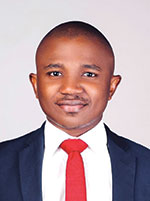

In an era where technological advancements are rapidly transforming industries, digital twin technology is an important industry innovation that promises to redefine asset management and maintenance. This technology is fast emerging as the unsung hero of facility, service and lifecycle management teams. It enables organisations, their internal teams, and external partners to stay one step ahead of potential downtime, and even catastrophic failure.
In fact, research group Gartner has identified digital twin technology as one of the top trends shaping industrial equipment and process manufacturing industry. But, to contextualise digital twin technology’s importance in facility and lifecycle management, it’s important that we take one step back.
Neglected maintenance of facilities increases safety and financial risks, often causing unplanned outages that can lead to equipment damage, and worse, injuries to personnel.
Equipment downtime and electrical outages cost organisations such as process plants hundreds of thousands of dollars. Unfortunately, in their efforts to mitigate downtime, equipment failure and outages, many engineers are limited to working with static paper or PDF-based electrical single-line diagrams (SLDs), which are often outdated. These limitations increase risk to operations and the difficulty of properly maintaining and updating the electrical systems documentation.
It’s virtually real
Digital twin technology allows facility management teams to overcome the limitation of static representation by gaining deeper insight using dynamic, real-time simulation that is enhanced by intelligent data.
Also, a digital twin isn’t only limited to modelling real-time conditions, it can also run predictive simulations. For example, it can demonstrate the effect of adding an additional motor or load to the existing electrical reticulation, and model the effects of that modification.
This is immensely valuable to maintenance teams who are responsible for staying one step ahead of any equipment problems and failures. Not only does it improve uptime, but it also aids external service providers in providing maintenance and support to facilities.
In the Nigerian oil and gas industry for example, digital twin technology is emerging as an important visual data and real-time data tool within in a real-world context, allowing teams to plan better and make important operational decisions swiftly.
Digital twins provide the following important benefits to maintenance teams:
• Virtual replication: Digital twins create a mirror image of physical assets, bridging the gap between the physical and digital worlds.
• Asset lifecycle: This covers the entire asset lifecycle, providing insights from design to end-of-life management.
• Predictive maintenance: Real-time data from sensors feeds into the digital twin, which detects anomalies and potential issues, and allows the maintenance schedule to be planned accordingly.
• Analysis of new equipment and changes: Digital twins can identify what impact there will be on a facility’s overall performance, helping teams to streamline diagnostics and make informed decisions on upgrades and modifications.
• Simulation and optimisation: Before physical deployment, digital twins can simulate various operational scenarios to identify and correct potential misalignment issues.
• Operational efficiency: By ensuring proper alignment through digital twins, organisations can improve the efficiency and longevity of their equipment.
• Risk management: Digital twins help in risk assessment by predicting the impact of misalignment on equipment and processes, allowing for proactive measures.
Next-generation predictive solutions such as digital twins, that use real-time and archived data to act as a simulation platform, are undoubtedly becoming an essential tool for maintenance teams. When provided with reliable, high-quality data, digital twins offer invaluable, real-time insights that enhance the quality, performance, and efficiency of facilities while adapting to ever-changing conditions and constraints. This technology is fast becoming an effective way to maintain a facility’s assets and reduce equipment and personnel risk.
Schneider Electric EcoStruxure Power Operation with ETAP Operator Training Simulator (eOTS) and ETAP Power System Monitoring and Simulation (PSMS) enables model-driven system training and predictive analysis for operators and engineers. This integration, for example, allows all EcoStruxure Power Operation systems to connect with ETAP Electrical Digital Twin on a continuous real-time basis. With this connection, operators can create and understand system behaviour during various real-world or plausible operating scenarios.
At Schneider Electric, we recognise the immense potential of digital twin technology in enhancing energy management and sustainability. Our EcoStruxure platform incorporates digital twins to provide real-time insights into energy consumption, equipment performance and environmental impact. By creating a digital replica of a building or industrial facility, we can monitor energy use, predict equipment failures, and optimise maintenance schedules, leading to significant cost savings and reduced carbon footprint.
| Tel: | +27 11 254 6400 |
| Email: | [email protected] |
| www: | www.se.com/za/en/ |
| Articles: | More information and articles about Schneider Electric South Africa |

© Technews Publishing (Pty) Ltd | All Rights Reserved